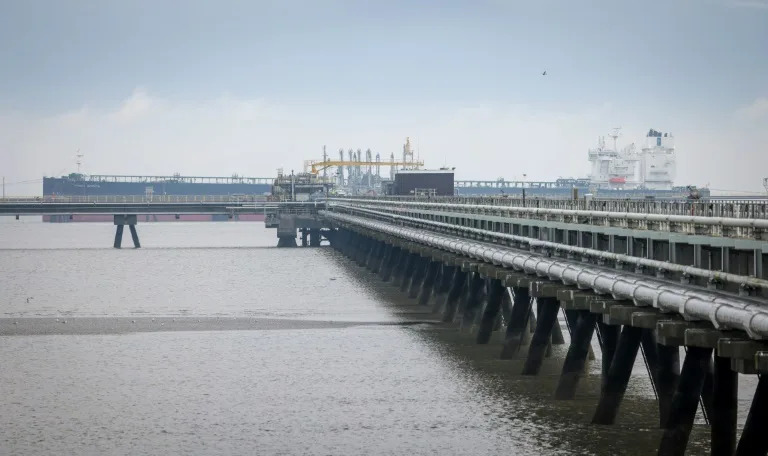Germany inaugurates this Saturday its first liquefied natural gas (LNG) terminal, built in record time before the country’s difficulties in adapting to living without Russian hydrocarbons.
The facility in the North Sea port of Wilhelmshaven will be inaugurated by Chancellor Olaf Scholz in a ceremony aboard the ship known as the Floating Storage and Regasification Unit (FRSU), named Hoegh Esperanza.
The terminal, already loaded with Nigerian gas that can supply 50,000 homes for a year, will start supplying on December 22.
Germany plans to open another four government-funded LNG terminals in the coming months, as well as private infrastructure.
All these terminals together should supply 30 billion cubic meters of gas every year starting next year, which is one third of the country’s total needs.
Of course, Berlin must find enough LNG to fill them.
These terminals allow natural gas that has been cooled to be imported by sea and condensed into liquid to facilitate transportation.
FRSU units store LNG and convert it into ready-to-use gas.
Until now, Germany did not have these terminals and 55% of its supply depended on cheap gas sent by pipeline from Russia.
– Terminals without gas? –
But since the invasion of Ukraine, gas deliveries to Germany have fallen and Berlin has been forced to resort to LNG processed in ports in Belgium, France and the Netherlands, paying a premium for transportation costs.
The government decided to invest to build its own facilities as soon as possible and spent billions of euros to get FSRU.
However, Germany has not yet signed any major long-term contracts to secure the supply of these terminals from January.
“The import capacity is there. But I am worried about the supplies,” Johan Lilliestam, a researcher at the University of Potsdam, told AFP.
There is a contract with Qatar to supply the Wilhelmshaven terminal, but deliveries are not scheduled until 2026.
Suppliers want long-term contracts but Germany doesn’t want to tie its hands with multi-year deals as the country aims to reach carbon neutrality by 2045.
“Companies need to know that purchasing in Germany will eventually slow down if we are to meet our climate protection targets,” Economy Minister Robert Habeck said.
– Cold winter –
Initially, the first euro zone economy may be forced to buy LNG from spot markets, which will mean higher prices for consumers.
In addition, the market may shrink next year due to renewed demand from China, which is leaving behind its strict anti-Covid policy, Andreas Schroeder, an expert at the ICIS energy institute, warned AFP.
“If Europe has been able to receive so much LNG in recent months it was because Chinese demand was low,” he said.
The Asian giant signed an agreement to buy gas from Qatar for 27 years, the longest in history, according to the Arab country.
Germany has experienced a cold winter so far, which has reduced reserves faster than expected.
“Gas consumption is increasing. This is a risk, especially if the cold continues,” said Klaus Mueller, director of the government agency that regulates the gas and electricity market.
There is a real risk that Germany will experience temporary supply disruptions in the coming months, Schroeder said.
Gas use is currently 13% lower than the previous year, but the government wants the decline to reach 20%.
In Europe, the difference between supply and demand could reach 27,000 million cubic meters in 2023, according to a report by the International Energy Agency, which is equivalent to 6.5% of annual consumption.

